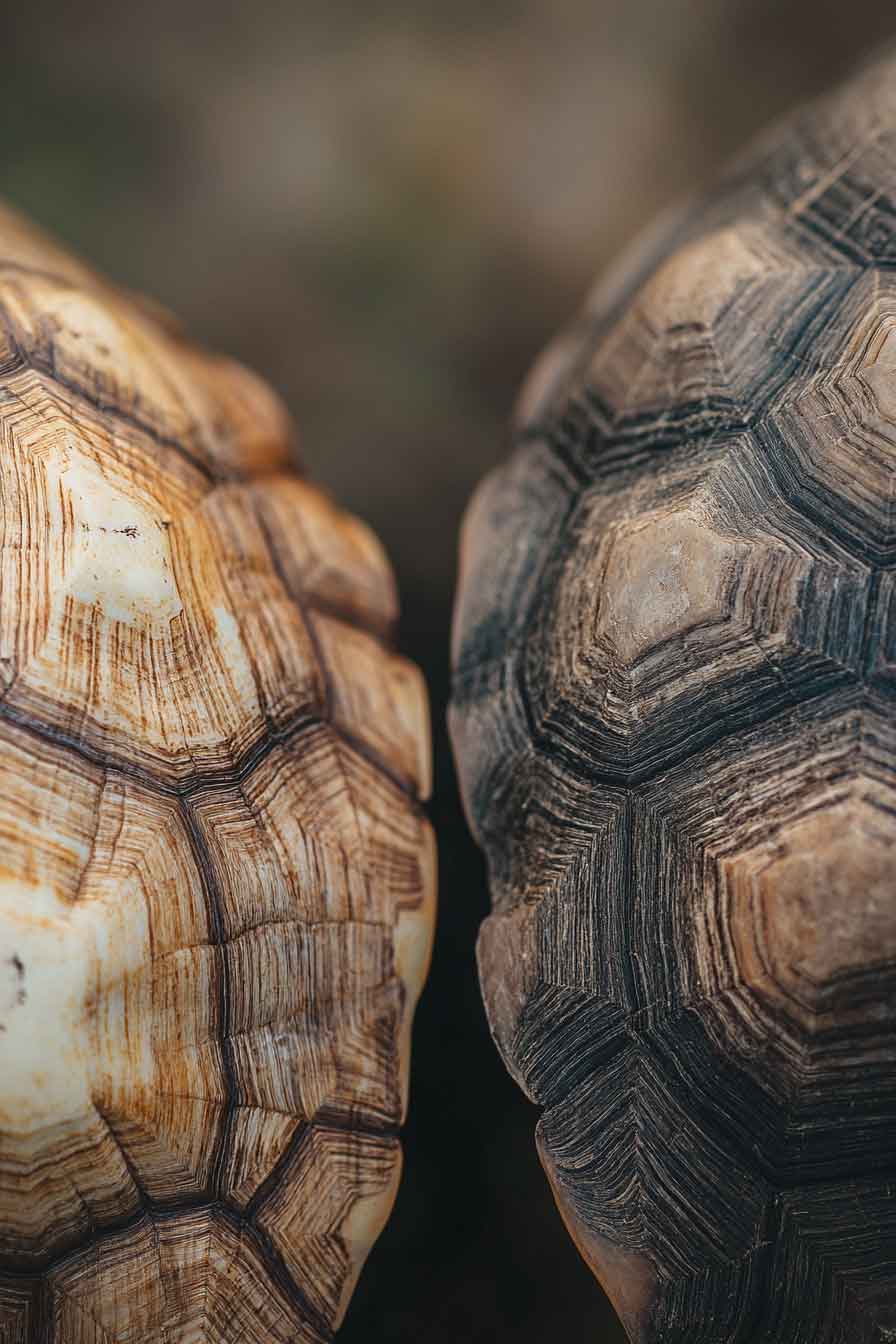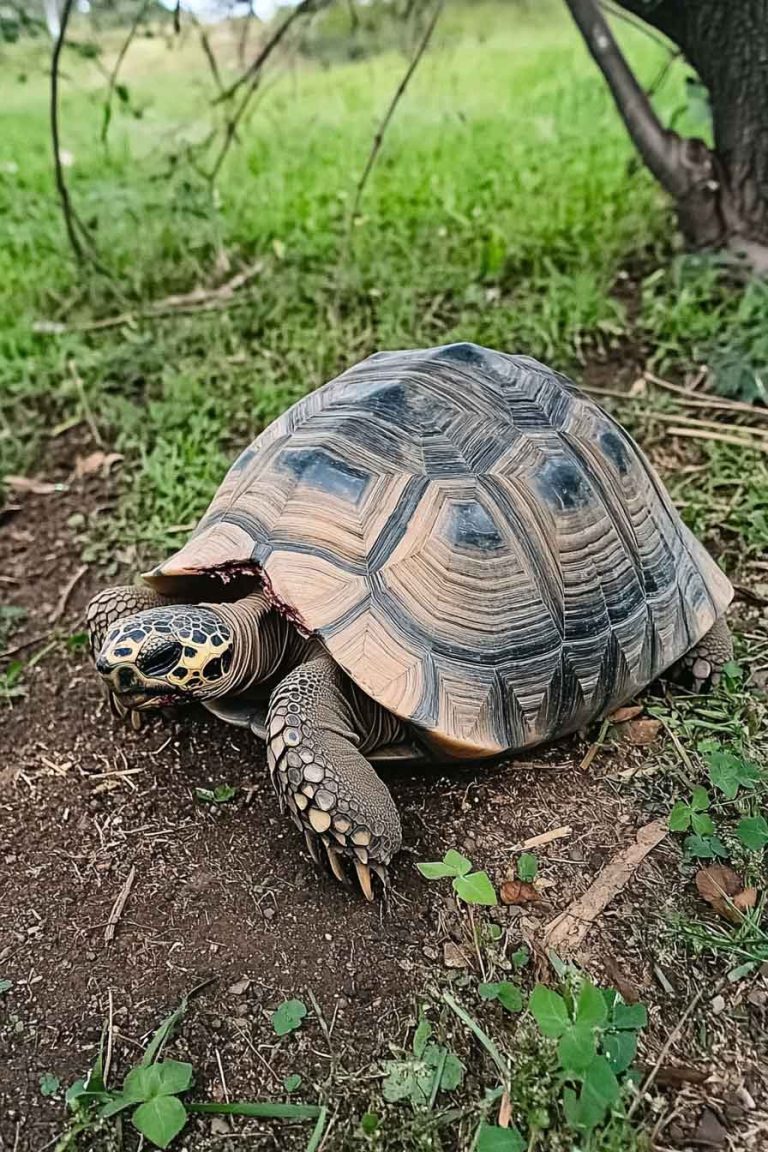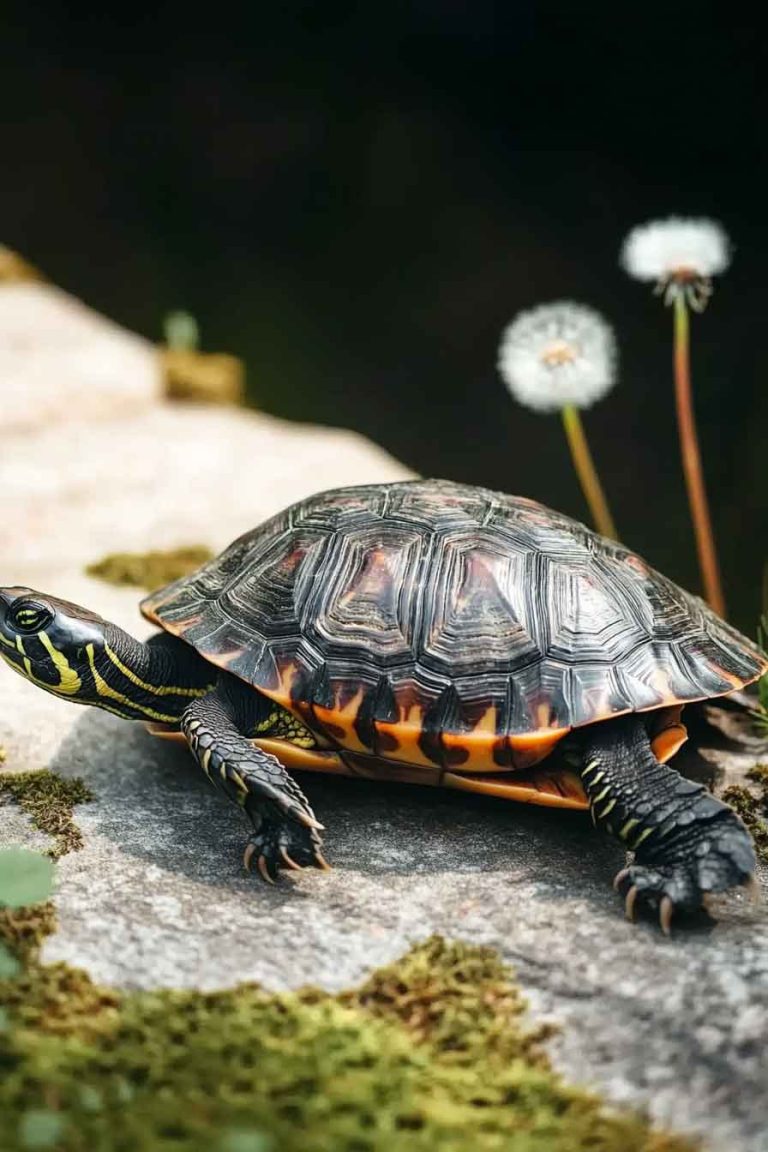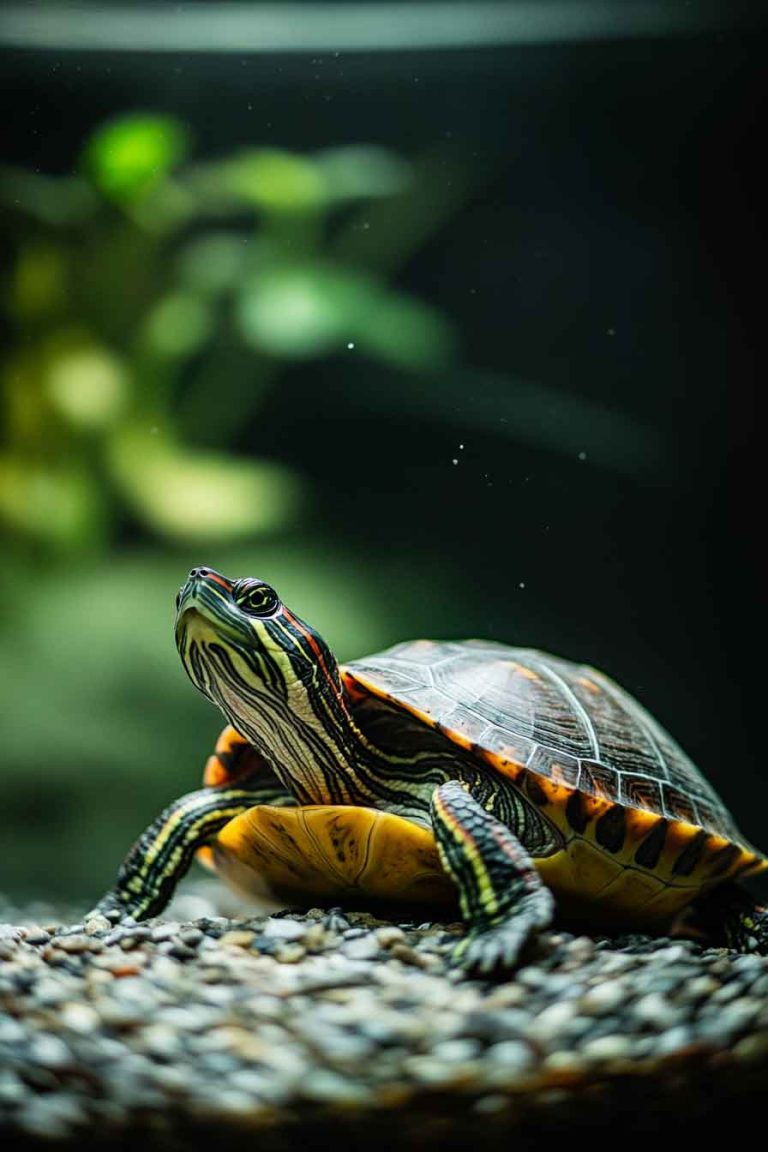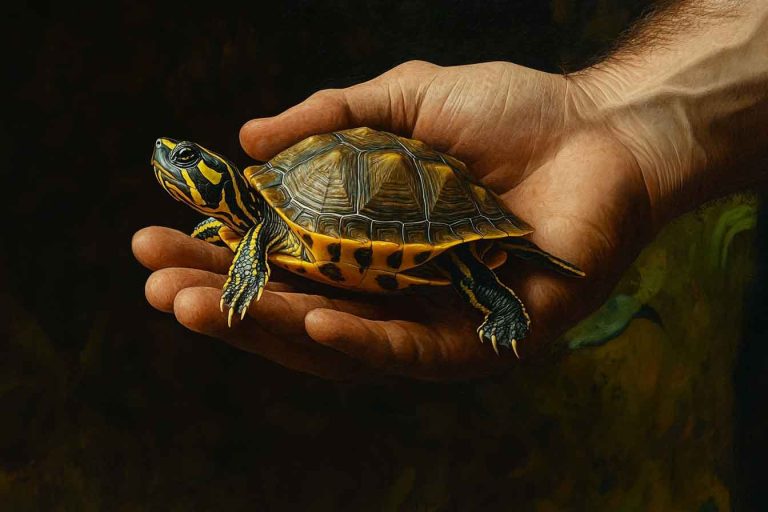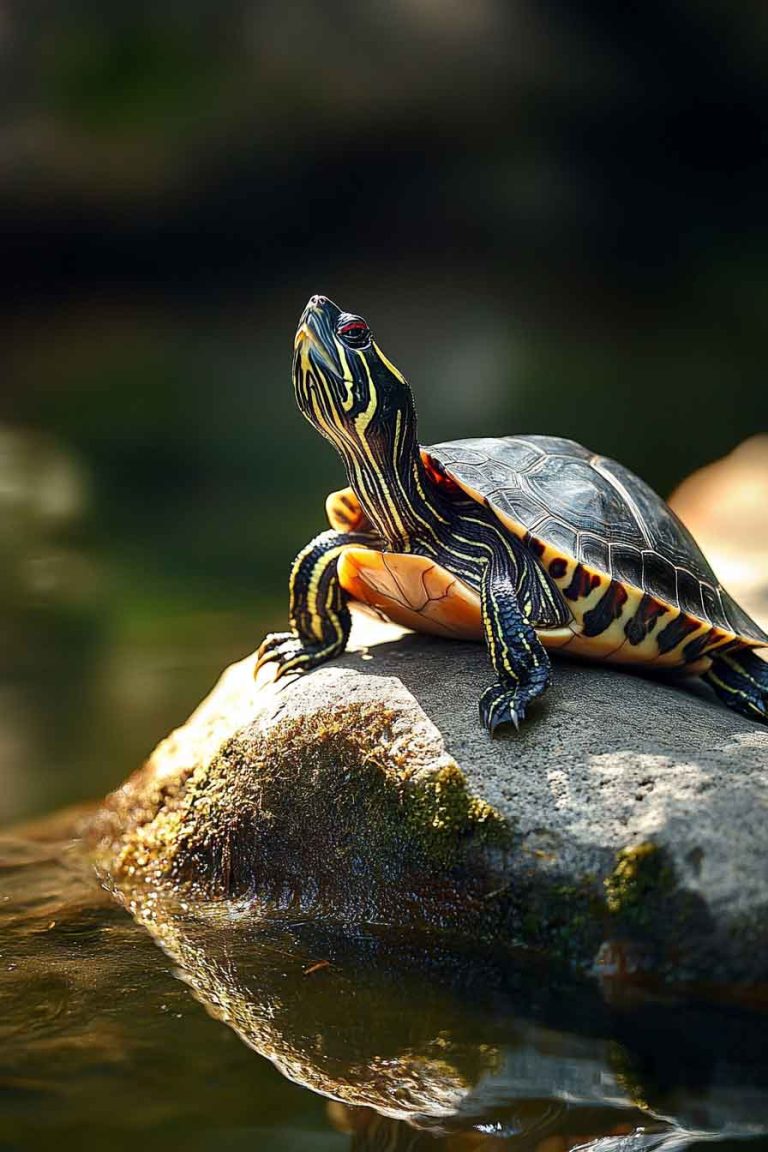Healthy vs Unhealthy Turtle Shell: How to Spot Shell Problems in Red-Eared Sliders
If you’ve ever looked at your turtle’s shell and wondered, “Is that normal?” — I’ve been there too. Honestly, I think that’s a question every red-eared slider owner asks at some point. These turtles have fascinating shells that change with age, shedding cycles, and even water conditions — but knowing what’s healthy and what’s not…
If you’ve ever looked at your turtle’s shell and wondered, “Is that normal?” — I’ve been there too. Honestly, I think that’s a question every red-eared slider owner asks at some point. These turtles have fascinating shells that change with age, shedding cycles, and even water conditions — but knowing what’s healthy and what’s not can be confusing.
I used to think a shiny, smooth shell meant everything was fine. Then one day, I noticed my slider had a few uneven spots and some discoloration underneath. Was it just shedding? Or was it shell rot? That moment is what sent me down the rabbit hole of learning to tell the difference between healthy and unhealthy turtle shells.
In this post, I’ll break down everything I’ve learned firsthand — the subtle clues that indicate health, and the red flags that mean your turtle needs help. By the end, you’ll know exactly what to look for every time you inspect your turtle’s shell.
What Does a Healthy Red-Eared Slider Shell Look Like?
A healthy shell is one of the best signs that your red-eared slider is thriving. When everything’s right — lighting, food, water, basking — the shell reflects that. But here’s the catch: not all healthy shells look the same. It depends on your turtle’s age, environment, and even recent shedding.
That said, here’s what I look for in a healthy shell:
1. Firm, Solid Surface
The first thing I check is the firmness. A healthy shell should feel hard and sturdy when you press it gently — not soft, flexible, or squishy. On younger turtles, the edges may be a bit softer, but they still shouldn’t bend under light pressure.
If I feel a “give” when I press, especially on the plastron (bottom shell), I take it as an early warning sign — even if the turtle seems fine otherwise.
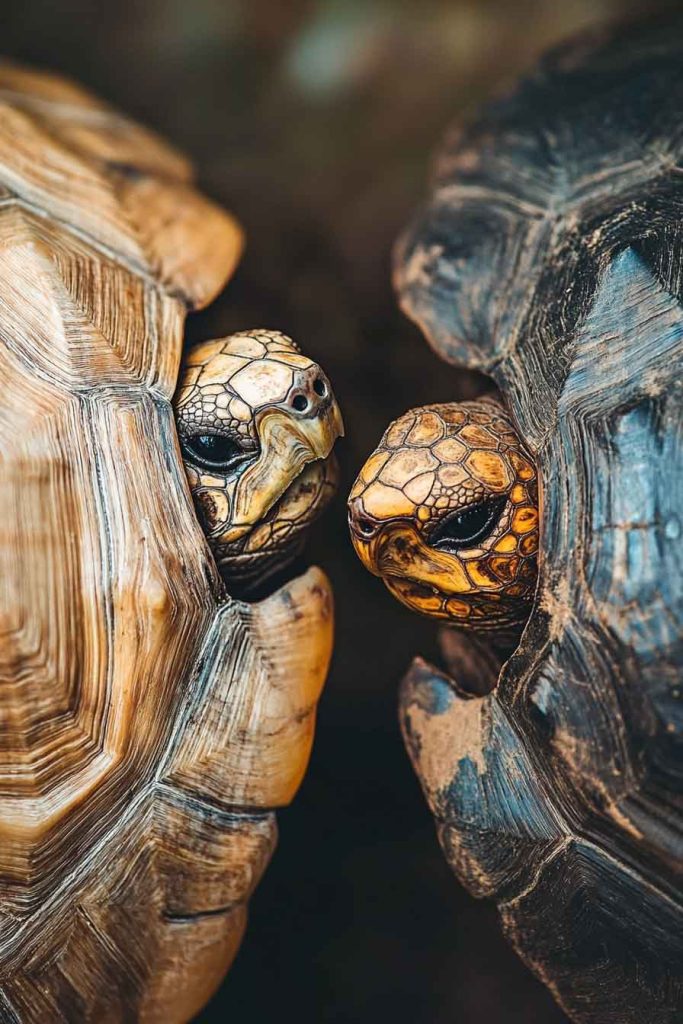
2. Even Color (with Natural Variation)
Not all shells are a solid color — and that’s totally normal. Healthy sliders often have:
- Olive green, brown, or black patterns
- Lighter yellowish lines or swirls
- Subtle fading with age
What I don’t want to see is sudden discoloration that wasn’t there before — like chalky white patches, bright red streaks, or blackened areas that don’t match the turtle’s natural pattern. We’ll talk more about those in Chunk 2.
3. No Strong Odor
Healthy shells don’t smell. If I pick up my turtle and get a strong, sour, or fishy odor — especially from the shell — that’s a big red flag. Shell rot, fungal infections, and bacteria can all cause a foul smell before any visual damage shows up.
4. Smooth but Textured Surface
A healthy shell is usually smooth to the touch, but it’s not supposed to be glossy or polished like a rock. Some natural texture or fine ridges between the scutes (those plate-like sections) is normal — especially after a recent shed.
I always make sure the shell has no deep pits, cracks, or raised, flaky areas. If I see anything lifting or peeling that’s not part of normal shedding, I investigate further.
5. Scutes That Lay Flat
The scutes should sit flush against each other without curling, lifting, or warping. If a scute starts to raise from the shell or looks loose, it could mean:
- Incomplete shedding
- Infection beneath
- Past trauma
Any raised scutes, especially if soft or discolored, are something I take seriously and monitor daily.
What Does an Unhealthy Shell Look Like?
Turtle shells don’t go bad overnight — but when they do start to change, the signs can be subtle at first. The key is knowing what’s normal for your turtle and catching the small shifts before they become serious.
Here are the early signs I watch for, plus some common shell problems I’ve dealt with (and seen in others):
1. Discoloration That’s Not Normal Shedding
Some color change is normal — especially during growth or after a shed. But if I see any of the following, I take it as a warning:
- White or gray patches that don’t come off with gentle cleaning
- Blackened or burned-looking spots that feel soft
- Red or pink streaks under the shell (especially on the plastron)
- Yellow patches that seem slimy or spread over time
These aren’t just cosmetic — they can be signs of fungal infections, shell rot, or even septicemia (a dangerous internal infection). The first time I saw a dull gray patch on my turtle’s underside, I didn’t act fast. Within a week, it turned mushy — that’s how I learned the hard way to trust my gut.
2. Soft or Spongy Shell
If the shell feels soft when you press it — especially in adult turtles — that’s a big red flag. I check the sides, corners, and underside during every cleaning.
Causes can include:
- Metabolic Bone Disease (MBD) from lack of calcium or UVB
- Advanced shell rot
- Prolonged water exposure without drying time
In juveniles, mild softness might be okay, but in adults, it usually means something is wrong with diet or lighting.
3. Pits, Cracks, or Raised Scutes
Any kind of dents, holes, or flaking scutes need to be monitored. These can happen after trauma (like falling or being dropped), or from infections that eat into the shell layer.
I once found a small pit under a loose scute on my turtle. I thought it was just shed-related, but it was an early fungal infection that needed daily cleaning and isolation.
Raised scutes — especially if there’s oozing, bad smell, or tissue visible underneath — usually mean wet shell rot. That’s when I dry-dock immediately and start treatment.
4. Foul Odor or Oozing Fluid
Shells should never smell. Period.
If I smell something rotten or fishy, or see:
- Pus or liquid under a lifted scute
- Bubbling when I clean the area
- Or signs of bleeding
…I treat it as an emergency. These are advanced infection signs that need immediate care — and likely vet attention.
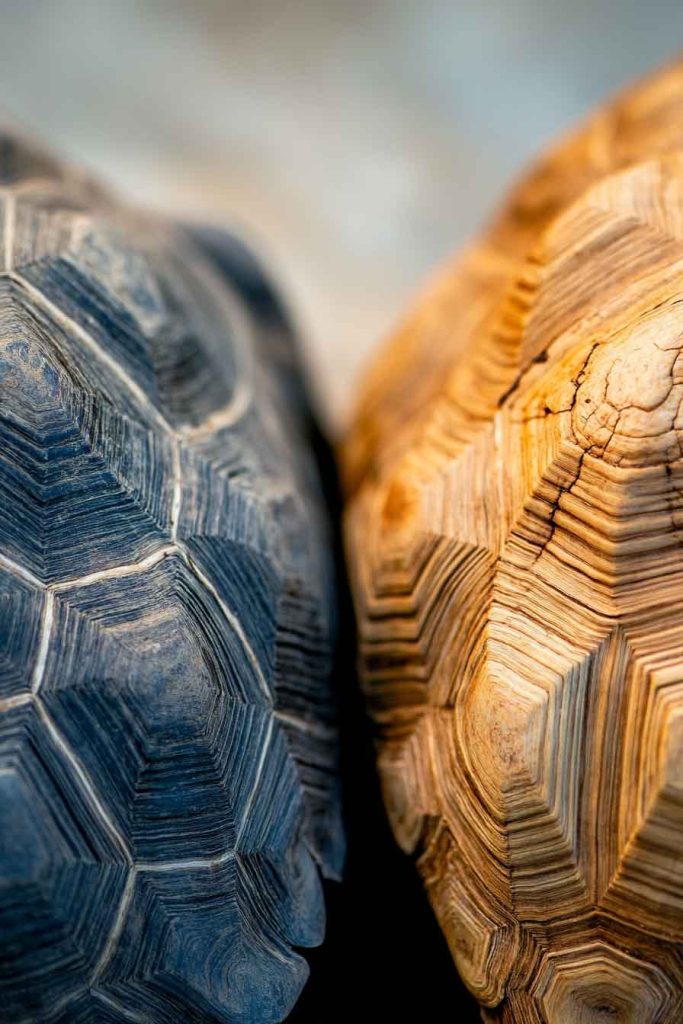
5. Lack of Shedding or Excessive Shedding
Turtles naturally shed scutes, but if your red-eared slider:
- Hasn’t shed in over a year
- Has multiple thick, stuck scutes
- Or is shedding constantly, with flakes falling off every week…
…it could point to problems with heat, UVB, or diet.
Too much shedding may signal poor nutrition or water chemistry.
Too little shedding can lead to scute stacking — where old layers trap bacteria underneath and lead to shell rot.
I check every scute during bath time to make sure nothing’s sticking or trapping moisture.
How to Care for a Red-Eared Slider With Shell Issues
If your turtle’s shell doesn’t look right, don’t panic — but don’t ignore it either. Over the years, I’ve learned that early care makes all the difference. Here’s what I personally do if I spot potential problems:
1. Inspect Daily in Good Lighting
I use a soft towel and gently dry my turtle after tank cleaning. That’s when I check:
- Scute alignment
- Shell texture
- Odors
- Color changes under the shell
If something feels off, I document it (photos help track changes over time).
2. Improve Basking and UVB Access
Shell problems are often tied to poor basking setups. I make sure my turtle can:
- Completely climb out of the water
- Bask under heat (85–90°F) and UVB lighting
- Stay dry for at least a few hours each day
I replace UVB bulbs every 6–12 months, even if they still light up — UVB output fades over time.
3. Maintain Clean Water
This is non-negotiable. I run a high-quality filter and test water weekly. For mild shell irritation, I do:
- Daily 25% water changes
- Spot cleaning of algae or debris on the shell
- Dry-docking for 1–2 hours if needed
Keeping the tank clean is my #1 tool for preventing infections.
4. Use Antiseptic Rinses When Needed
For minor issues (like flaky or lifting scutes without swelling), I’ve safely used:
- Diluted Betadine (povidone-iodine)
- Chlorhexidine (vet-grade disinfectant)
I apply it with a cotton swab, let it sit for a minute, rinse, and dry-dock. If it doesn’t improve in 3 days — I call the vet.
Prevention: How I Keep My Turtle’s Shell Healthy
After making some big mistakes early on, I now follow this weekly routine:
- Clean and refill tank water every 5–7 days
- Bask check: is the light warm enough? Is the UVB working?
- Shell inspection during soak or towel dry
- Feed a calcium-rich, varied diet with veggies, pellets, and cuttlebone
- Avoid overcrowding and tankmates that may nip the shell
Also — I never skip routine shedding checks. That’s how I catch stuck scutes or early infections before they become big problems.
FAQ: Healthy vs Unhealthy Shells
1. How often should my turtle shed scutes?
Healthy sliders typically shed every 4–6 months as they grow. Adults shed less often. Irregular shedding or scutes that don’t come off might signal a problem.
2. Is algae on the shell bad?
Not always. A little algae is common and usually harmless — but excess buildup can trap moisture and hide infection. I gently brush it off weekly.
3. Can I help my turtle shed old scutes?
No — let it happen naturally. Don’t peel or pick. Soaking and gentle brushing help, but forcing a scute off can cause injury or infection.
4. My turtle’s shell is turning white — is that normal?
If it’s flaky and dry, it may be natural shedding. But if it’s chalky, soft, or smelly, it could be fungus or rot. Check texture, smell, and spread before deciding.
5. Can turtles heal from shell damage?
Yes — with good care. Minor pits and discoloration often grow out over time. But deep infections, cracks, or bleeding need vet intervention fast.
Final Words
Knowing the difference between a healthy and unhealthy shell is one of the most important skills a red-eared slider owner can learn. I’ve made my share of mistakes — but every time I’ve caught a problem early, it’s made recovery easier and my turtle happier.
The shell is your turtle’s armor, yes — but it’s also a living part of their body, and it needs care just like anything else. Stay observant, trust your instincts, and don’t be afraid to ask for help.
Thanks for reading — and if this helped you, check out my other posts on shell rot, shedding tips, and basking behavior. Every healthy shell starts with the right info.

